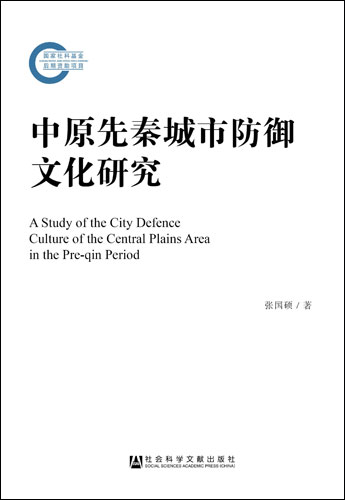More than walls, fortifications part of 'defense culture'

A Study of the City Defense Culture of the Central Plain Area in the Pre-Qin Period
Author: Zhang Guoshuo
Publisher: Social Sciences Academic Press (China)
Cities in the pre-Qin period (before 221 BC) were mainly concentrated in the Central Plain, which is why it is an important location for archaeologists and historians who study population centers of the time. An in-depth exploration into the city defense culture of certain regions will not only lead to breakthroughs in the study of urban history in the pre-Qin era but also provide a window into the origin and formation of ancient Chinese civilization.
A Study of the City Defense Culture of the Central Plain Area in the Pre-Qin Period by Zhang Guoshuo draws upon a vast amount of archaeological materials and records to document the number of pre-Qin cities along with their characteristics and stage of development.
Furthermore, applying multidisciplinary research methods, the book thoroughly examines the type of fortifications and construction techniques used to build them. It also explores the formation and evolution of defensive systems as well as the exploitation and utilization of defense resources while comparing the defense cultures of cities in the Central Plain to those of the surrounding areas.
The author believes that military defense of cities in the period should be viewed from a holistic, broad perspective rather than using the sophistication of city walls as the only criterion of a city's defensive capacities. Also, it's important to note that the study should not be confined to a certain city, because surrounding cities, military fortresses, and large-scale natural defenses are as significant as sophisticated city walls. Defense facilities of cities in the Central Plain at that time can be categorized into four types: walls, auxiliary facilities, moats and natural defenses.
Three things about the book are worthy of mention. First, it puts forward the novel concept of "city defense culture." Then it makes a sound argument by cross-referencing other focal points of archaeology dealing with the pre-Qin period, though it remains focused on the study of city defense culture in the Central Plain.
Finally, the achievements are quite professional, systematic and innovative. For example, it divides the development of pre-Qin cities into three stages. It presents some fresh discussion on the capital city’s defense system in the Central Plain in the pre-Qin era, the arrangement of the inner wall and the outer wall in the Xia Dynasty (c.2070-1600 BC), and the similarities and differences among cities in the Central Plain and those in the surrounding areas.
